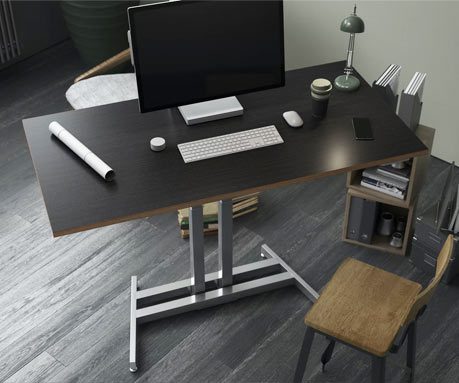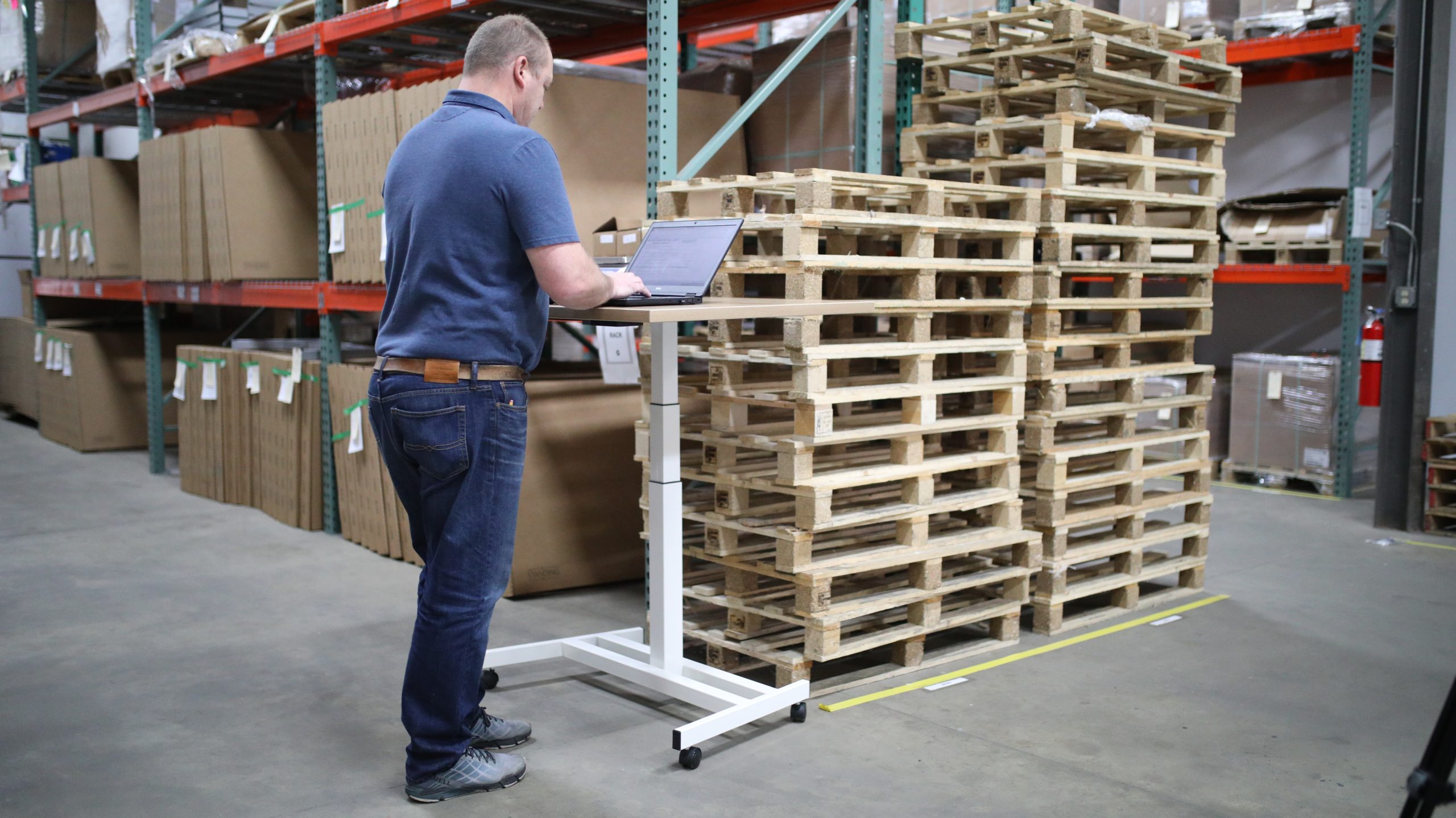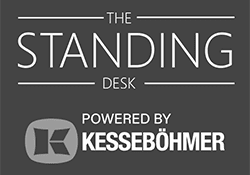Psychological Benefits of Using a Standing Desk
By now most people are aware of the health benefits of standing desks, including decreased risk of obesity, cardiovascular disease, and type 2 diabetes. It’s less commonly known that standing desks, which allow you to stand intermittently while you work, are also associated with a number of psychological benefits. Psychological benefits of using a standing desk include improved mood, increased productivity, and reduced stress.
Standing Desks and Improved Mood
One of the main psychological benefits of a standing desk vs sitting is improved mood. Research published in Mental Health and Physical Activity shows that sedentary time at a computer is associated with both more severe depression and anxiety. Reducing sitting time at work makes sense as a strategy to improve mental health, and using a standing desk is an easy way to add more standing time to the mix.
A number of studies have also found that standing desks can help to improve mood and reduce feelings of fatigue, which can be especially beneficial for individuals who work long hours. People who use standing desks often report feeling more energetic and alert compared to those who sat all day.

Standing Desks and Increased Productivity
In addition to improving mood, standing desks have also been found to increase productivity. A study published in Psychological Science found that mental processing time for a psychological test was slightly faster for standing study participants versus the sitting participants. The theory is that standing enhances cognitive control and selective attention. This may be due to the fact that standing desks can help to increase blood flow, which can improve cognitive function and focus.
Some of the benefits of standing at work include improved mood and other factors that lead to greater productivity. One study published in the British Medical Journal suggests that workers who use sit-stand workstations experience less daily anxiety and improved job performance, work engagement and overall quality of life. Another study of call center workers found that workers who used standing desks achieved higher productivity compared to workers using a traditional seated desk.
Standing Desks and Reduced Stress
Standing desks may also be beneficial for reducing stress. A study published in Preventing Chronic Disease found that standing desks were associated with a decrease in stress levels, while another study published in the journal Ergonomics found that they were associated with a decrease in musculoskeletal pain, which can be a major source of stress for many individuals. In addition, standing desks may help to reduce the risk of developing stress-related health problems, such as heart disease, by promoting better posture and reducing the negative effects of prolonged sitting.
One Part of a Healthy Lifestyle
The potential psychological benefits of standing desks are promising, but it is important to note that a standing desk may not be suitable for everyone. Some individuals may find that standing for long periods of time can be tiring or uncomfortable, and may prefer to sit while working. It is also important to remember that standing desks are not a replacement for regular physical activity, which is essential for overall health and well-being.
The Effect of a Standing Desk on the Mind
Using a standing desk can have a number of psychological benefits, including improved mood, increased productivity, and reduced stress. While they may not be suitable for everyone, standing desks can be a useful tool for individuals who want to improve their mental health and job performance.
Pneumatic and Electric Desks from The Standing Desk
The Standing Desk offers both pneumatic and electric standing desk models that suit the needs of desk workers of all sizes and body types.
Pneumatic Desks
Pneumatic desks use the power of compressed air to lift and lower the desk. Moving the desk surface requires a light push while pulling on the adjustment handle. With no cords or electrical components, they are flexible and easy to reposition, with the addition of casters. Pneumatic desks are among the quickest to adjust, so they make it easy to flow from one task to the next.
The Standing Desk offers four models of ergonomic pneumatic desks:
The Kloud, a counterbalanced, weight adjustable pneumatic desk designed for heavy loads up to 150 lbs.
The Nimbus, a counterbalanced pneumatic desk with a sturdy design.
The Luften, a twin column pneumatic desk ideal for larger monitors, with a 60” wide surface.
The Andern, a single column pneumatic desk that’s perfect for laptops or single monitor users, with a 40” or 48” wide surface.
Electric Desks
Electric desks use powerful electric motors to lift and lower the desk surface with the touch of a button. These desks are designed to lift heavier loads. The Standing Desk’s electric desk models are operated by brushless electric motors for quieter operation than brushed motors.
The Oben desk, with a 48” or 60” wide surface, can lift up to 250 lbs.
The Andern electric, a single-column electric desk, works well in smaller spaces, with a 40” or 48” wide surface.
Brighten Your Work Day with a Standing Desk
We could all use a little psychological boost during the work day. Whether you’re looking to decrease stress, enhance productivity, or just add a little more movement to improve your mood, standing more can make a difference. Get more out of your workday with a standing desk.














